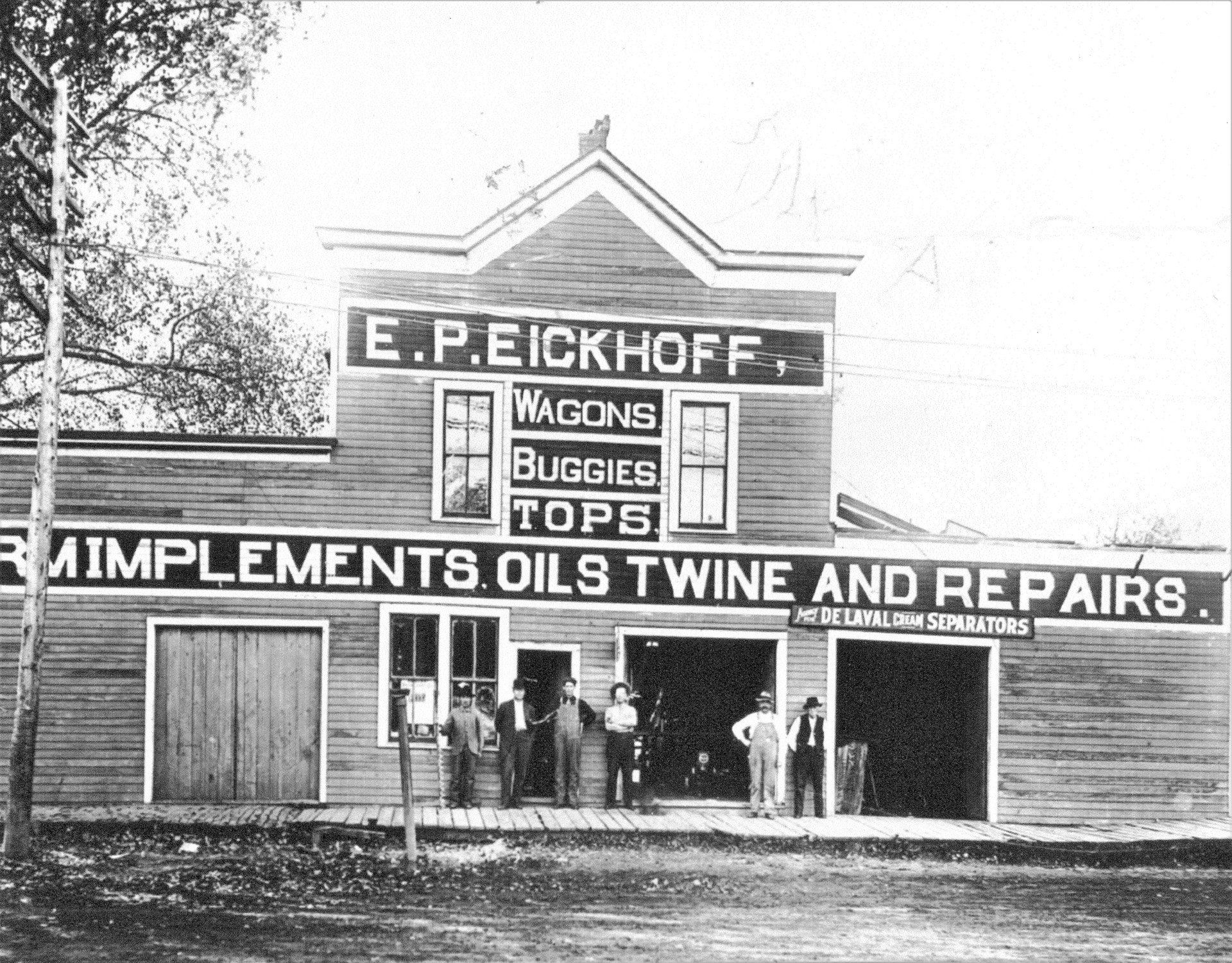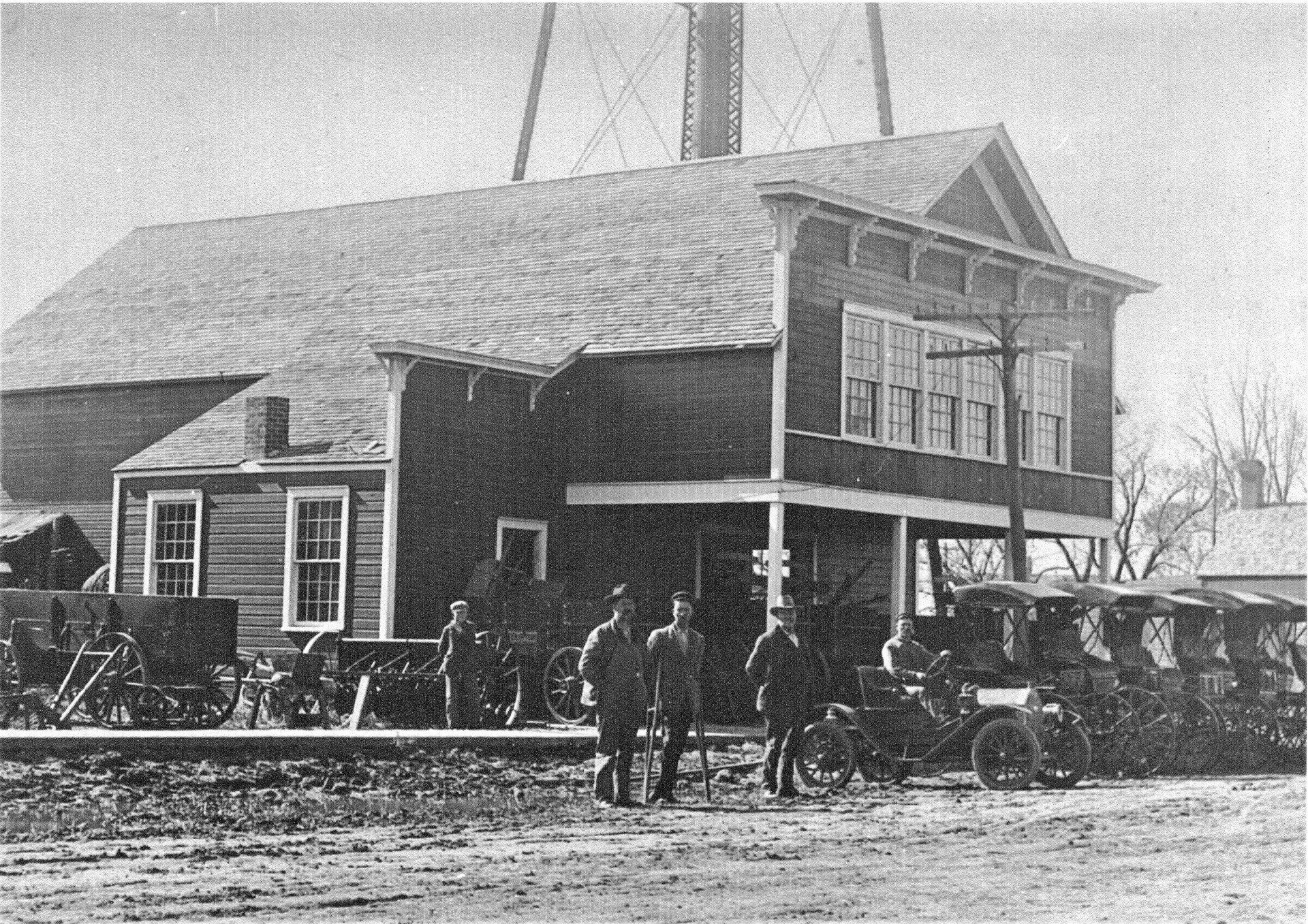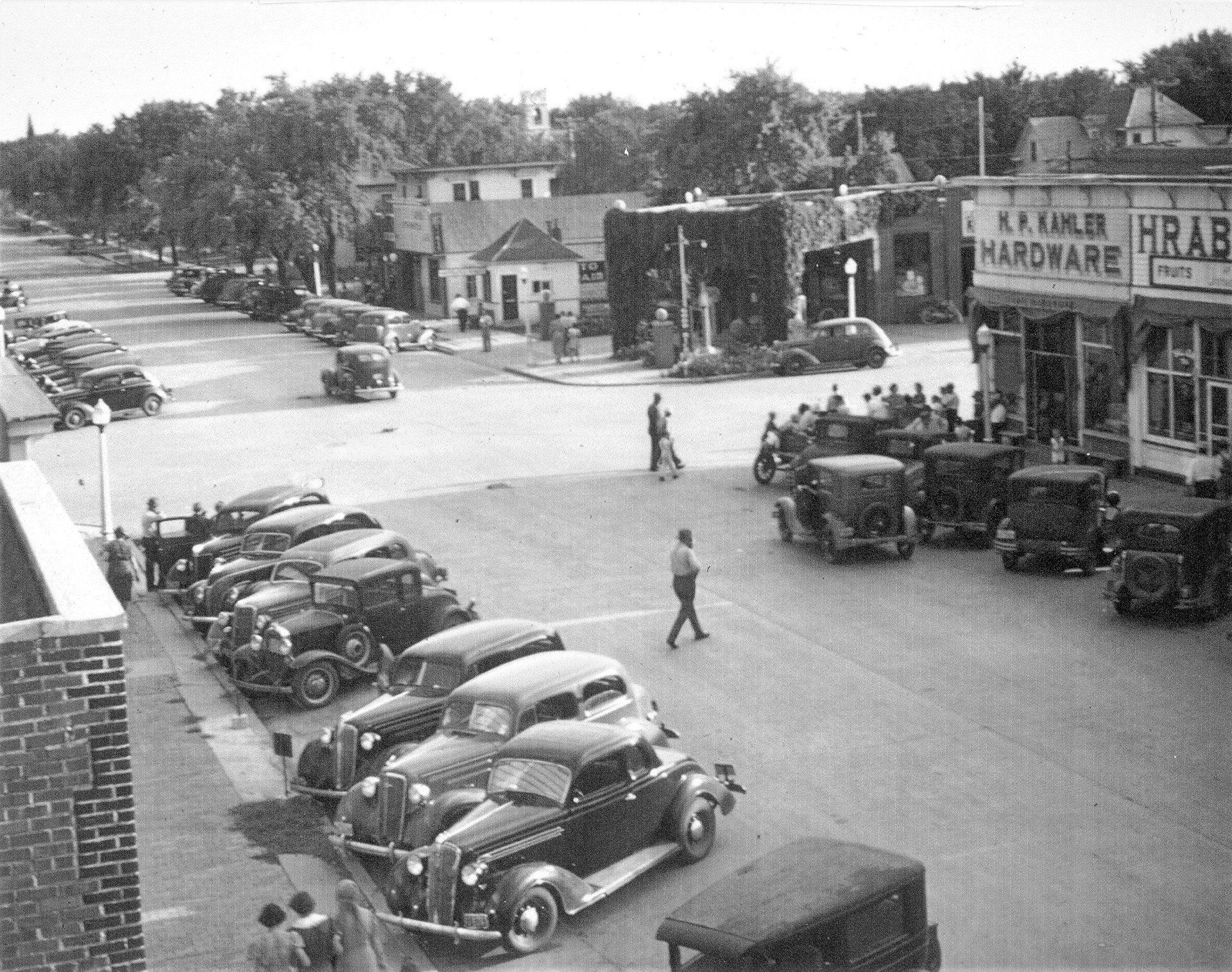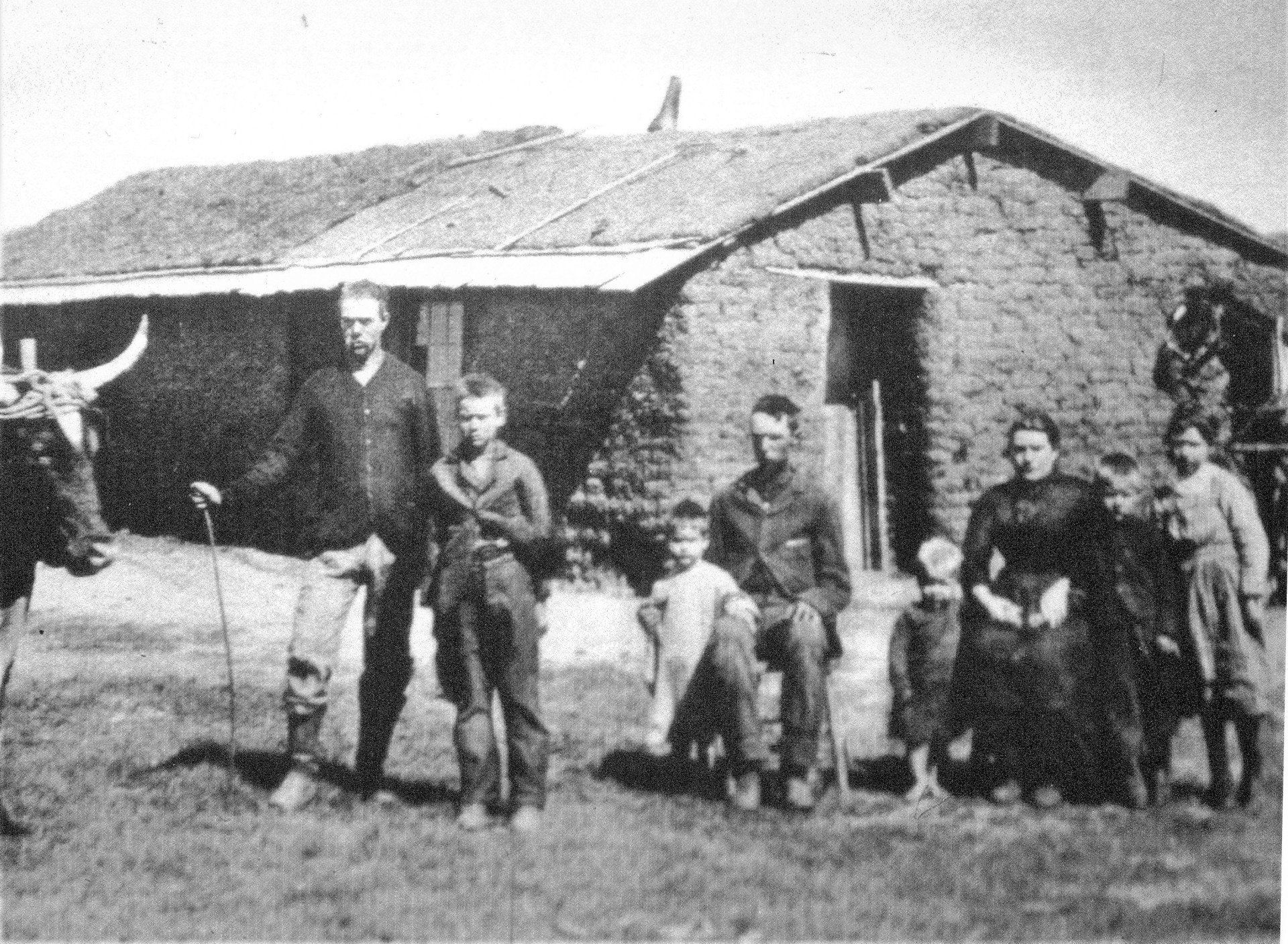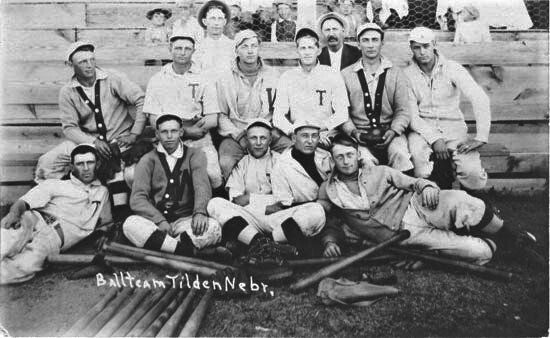Tilden, Nebraska
Tilden History
In 1868 Crandell Hopkins was the first to claimed land at this location. Ten years later, nearly 200 settlers from eastern colonies, as well as German and Swiss immigrants, lived in the area. Getting supplies from West Point, Columbus or Yankton was arduous, over hazardous river crossings and dangerous trails. Mills built in Norfolk, Neligh, and Oakdale helped, but the settlement was still quite isolated.
In 1879 this peaceful, unassuming crossroads in the Elkhorn Valley was to become a dream-come-true for the area's settlers. The Sioux City & Pacific Railroad extended its line to Norfolk and Battle Creek.
There were no plans for a depot where the town now stands. However, a disagreement over bonds erupted and when it was settled, Antelope County was to have two depots, one near Oakdale, the other near the Madison County line. The citizens seized the opportunity. They built a large depot on the Antelope side of the line (the town's present location), making sure the railroad kept its promise.
When the first train arrived, everyone was there to celebrate! They had dealt with the railroad and county government, and had won! They had acquired the vision they sought, and while there was still no sign of the town, its future existence was assured.
Charles Burnham put up a building, opened a store, and is quoted to have said, "I looked at my well stocked shelves and wondered who was going to buy it." Settlers arriving on the railroad welcomed his merchandise, and soon he expanded into larger quarters. When the railroad platted the town in 1888, he became the "founding father," helping negotiate for land owned by McComb and Livingston. The town was named "Burnett" for the railroad superintendent.
Burnham was appointed postmaster, and by fall there was a blacksmith, saloon, livery stable, and grain buyers. The next year, Gilbert Ditz, a contractor, did a rushing business, putting up many stores and homes. By 1882 there were 40 residents, a rooming house, bank, restaurant, meat market, dentist, a school, several churches, and a practicing physician, Dr.Griffith.
The "Burnett Blade" newspaper, started in 1884 by A.E.Sheldon, is a valuable resource of information. The early town was dusty and/or muddy, as street-grading laws were non-existant. Each house had an "outhouse" and a barn, with no sanitary ordinances governing them.
But, Burnett had bigger problems than these: its principal streets were in two counties! Laws passed for one county did not affect business in the other. The Madison County side incorporated in 1885, but property in Antelope County was not annexed. Persons committing a crime on one side of the street could cross to the other side and be safe from arrest.
By 1887 it had a school, fine hotel, and an opera house for dances, plays, political rallies, and magic lantern shows. Horse racing, ball games, and ice skating also provided entertainment for ranchers, farmers, and townfolk. It was no longer a "frontier town."
In 1892 steps were finally taken to unite the town. In addition to improved law enforcement, ordinances were passed governing sanitation, taxes, sidewalks, business, fire, and police protection.
By this time, the town was using two names. Burnett was "too similar" to Bennett, a town several years older. Howard Botsford, postmaster, suggested "Tilden." (The good Democrats of the town had not forgiven voters for choosing Ruthaford B. Hayes as president over Sam Tilden.) The "Tilden Citizen," which gives an on-going history of the town, was established in 1893. Tilden was the postal name, but the people called it Burnett until 1902, when Judge Boyd ordered it changed on municipal records.
Tilden became a city of the second class in 1919 when it reached a population of 1,000. The town has held close to this number with the population of 953 in 2010. In 1980, Tilden held a very successful centennial celebration.
In late 2000, three Tilden residents, Georgia Wyatt, Dixie Kucera, and Virginia Werkmeister organized the hosting of the Smithsonian Exhibit “Listening to the Prairie – Farming in Nature’s Image”. This event became the foundation for Tilden’s annual celebration, “Prairie Days” which is held the last weekend in July, where the focus on antiques and collectibles continues.
The Raymond A. Whitwer Tilden Public Library was built in 2001. The funds for the building were due to the generosity of local benefactor, Raymond Whitwer, who personally worked on the construction. Also, helping with the raising of funds were the Tilden Library Foundation and Friends of the Library. This 14,000 square feet building has an attached Lied Auditorium of 2,100 square feet, funded by the Lied Foundation.
Tilden is a progressive community in an agricultural setting, as well as, in its business district. An empty store-front is a rare thing these days. There have been businesses that have come and gone. The Tilden Community Hospital, a long-standing institution in the community, closed July 1, 2014. A local newspaper, the Tilden Citizen and Meadow Grove News, is still published weekly.
Education has always been in the forefront of the Tilden community. The first school was built in 1913, burned down, and was rebuilt in 1922. In 1987, a new building was constructed. In 2017, a state-of-the-art building was constructed after the bond issue was only put to vote once.
There are four churches, four parks, and access to the Cowboy Trail which includes Tilden’s spur trail. Among Tilden’s notable citizens is Richie Ashburn, a famous Major League baseball player, which one of the parks is named after. The swimming pool was built during the Depression in 1935 by the WPA. It is a semi-circular pool that is still well-used despite it being unheated.
New housing has been developed, including a low-income housing complex, an assisted living, new apartments, and new home construction.
A non-profit thrift store run by volunteers added to the prosperity of the town by donating its profits to various improvement projects.
Our town, Tilden, will not only survive as a small town, but continue to grow and prosper.
Additional edits written by DeAnna Martensen

